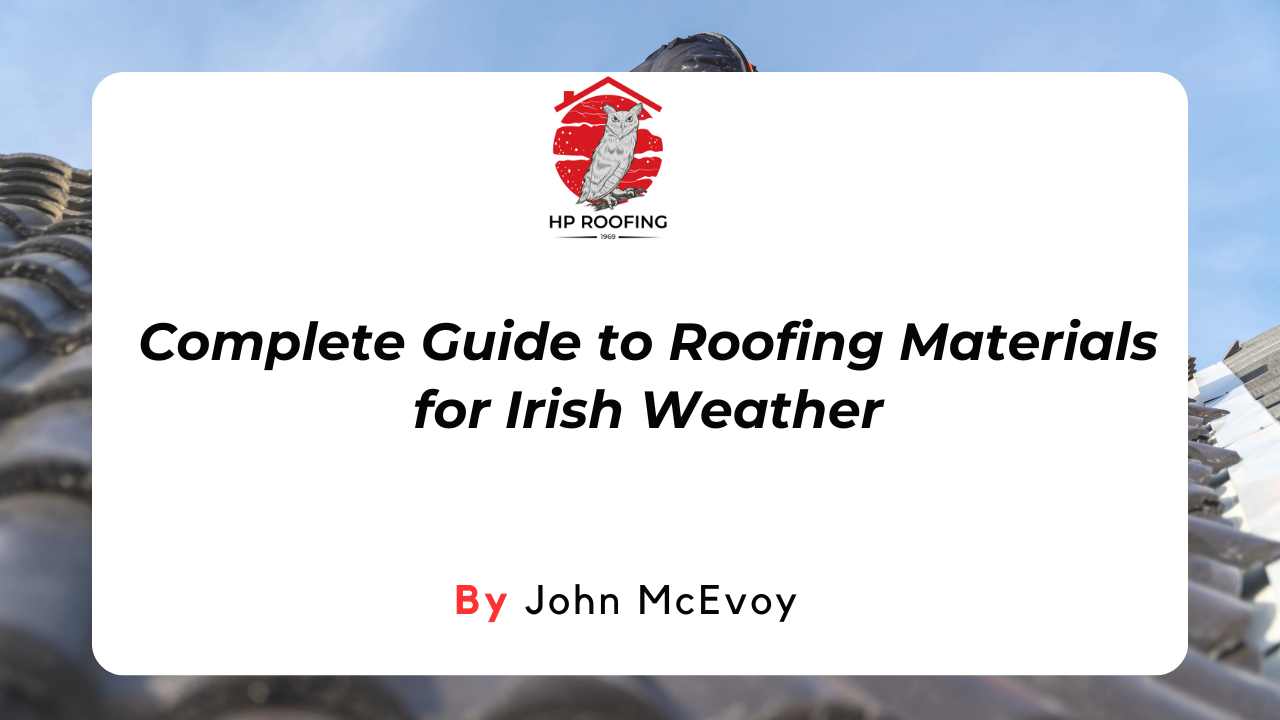Dealing with a leaky roof can be a homeowner's nightmare. Not only does it cause immediate stress, but it can also lead to significant damage and costly repairs if not addressed promptly. But how do you know if your roof is actually leaking? Identifying a leak early can save you time, money, and a lot of hassle.
In this blog, we'll guide you through the meaningful signs of a roof leak, helping you spot problems before they escalate. From water stains on your ceiling to the subtle scent of mildew, we'll cover all the crucial indicators.
So, whether you're a new homeowner or have been in your house for years, this guide will equip you with the knowledge to keep your roof in top shape and your home protected.
Breaking Down the Basics of Roof Leaks
A roof leak is when water finds its way through your roof and into your house. It's like when a raincoat gets a hole in it and lets water in. This can happen for a few reasons:
- Weather Damage: Just like a storm can break branches off trees, it can also damage your roof. Strong winds, heavy rain, and big hailstones can all hurt your roof and make it leak.
- Getting Old: Over time, just like clothes can wear out, your roof gets old too. An old roof might start to let water in.
- Not Put On Right: If your roof wasn't put on properly in the first place, it might not be strong enough to keep water out.
Different kinds of roofs can have different problems. Some roofs are flat, and some are slanted. Some are made with shingles, and others might have tiles. Each type has its own way of dealing with water and its own chances of leaking.
Early Signs of a Roof Leak
Knowing what to look for can help you catch a leak before it gets bad. Here are some signs:
Water stains
Knowing what to look for can be crucial to catching a roof leak before it causes major damage. One of the most common indicators is water stains; these are brown, wet spots that appear on your ceiling, similar to stains on a shirt after something is spilled on it.
Dripping water
Another clear sign is dripping water. If you notice water dripping from your ceiling, particularly during or after rain, it's a strong indication of a leak. Sometimes, the clues are not visual but olfactory.
Musty smells
Musty smells in parts of your house, similar to wet socks or a damp basement, can suggest hidden moisture from a leak.
Mould and mildew
Additionally, the presence of mould or mildew, which appears as green or black spots on your walls or ceiling, is an indicating sign. These fungi thrive in moist environments, so their growth can indicate a moisture problem, often due to a leak.
So, it's important to remember that catching a leak early can significantly reduce the hassle and cost of repairs. By staying alert to these signs, you can take timely action to keep your home dry and comfortable.
Inspecting Your Roof for Leaks
In this section, we will inspect the roof to overcome leaking issues.
Safety first
Before you start looking at your roof, remember that being safe is the most important thing. Climbing on your roof can be dangerous. If you're not comfortable doing it, it's always a good idea to ask someone who knows how to do it safely, like a professional. If you do go up there, use a sturdy ladder, wear shoes that won't slip, and never walk on the roof when it's wet or windy.
External inspection
You don't always have to climb onto your roof to check for problems. Sometimes, you can see a lot just by looking at the ground. Use binoculars if you have them. Look for things like shingles that are missing, broken, or look different from the others. Also, check the metal pieces around chimneys and vents (these are called flashings) to see if they are bent or pulled away from their normal position. These are signs that your roof might need some fixing.
Internal inspection
Another place to check for leaks is inside your house, especially in the attic or any high spaces under the roof. Bring a flashlight and look for signs like dark spots or areas where the wood looks different, especially after it rains. Also, check for any light coming through the roof, as this can be a sign of a hole or gap.
What to look for
When you're inspecting, keep an eye out for certain things that can tell you a lot about your roof's health. Look for trails or lines that show where water might have run. Check for any rust on nails or metal parts, as this can mean there's been water around. Also, look at the boards of your roof (the decking) to see if any are sagging or bending, as this can be a sign of a leak that's been there for a while.
Temporary Measures and When to Call a Professional
Let's now explore temporary measures and when to call a professional. Understanding these steps can be crucial to effectively managing a roof leak and knowing when expert help is needed
Temporary fixes
If you find a small leak in your roof, there are a few quick fixes you can do to help until you get a professional to look at it. Covering the area with a waterproof tarp is one way. You can usually find these tarps at hardware stores. Make sure the tarp covers the leaking area completely and extends over the roof's peak. This is just a short-term solution, though.
Knowing when to call in the experts
It's important to know when a problem is too big for a quick fix. If you see a lot of damage, like many missing shingles or big holes, it's time to call a professional. They have the right tools and know-how to fix your roof safely and properly. Also, if you're not sure about what you're seeing or if you feel unsafe checking your roof, it's best to call someone who knows what they're doing.
Preventing Future Roof Leaks
Let's now explore preventing future roof leaks. Understanding these steps can be crucial to effectively managing a roof leak and knowing when expert help is needed.
Regular checks
One of the best ways to stop leaks from happening is to check your roof regularly. Look at it closely at least twice a year and after big storms. This way, you can catch small problems before they turn into big ones.
Keep it clean
Keeping your roof clean can also help prevent leaks. Make sure to clear away things like leaves, branches, and any other debris. These can trap water and make it more likely for your roof to leak.
Proper maintenance
Sometimes, parts of your roof might need to be replaced or fixed. Things like broken shingles or seals around vents and chimneys can lead to leaks if they're not taken care of. Keeping up with these small repairs can save you from bigger problems later on.
Gutter care
Don't forget about your gutters. They help keep water moving away from your roof. Make sure they are clean and not blocked. If water can't flow through them, it can back up onto your roof and cause leaks.
In Summary!
Identifying and addressing roof leaks promptly is key to maintaining your home's integrity. From spotting early signs like water stains and musty smells to conducting both external and internal inspections, you can take proactive steps to manage minor issues. Remember, for significant damage or when in doubt, it's always safer and more effective to call in professionals.
If you're facing any uncertainties or need expert assistance, HP Roofing is here to help. Our experienced team specialises in fixing roof leaks, ensuring your home stays dry and secure. Contact HP Roofing today for top-notch roof leak services and to give your roof the care it deserves.
















